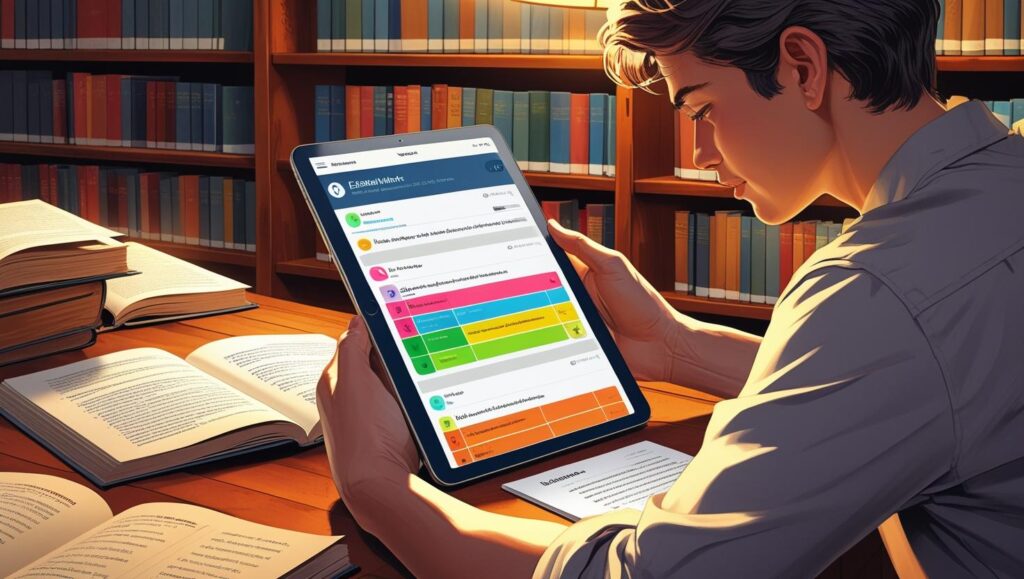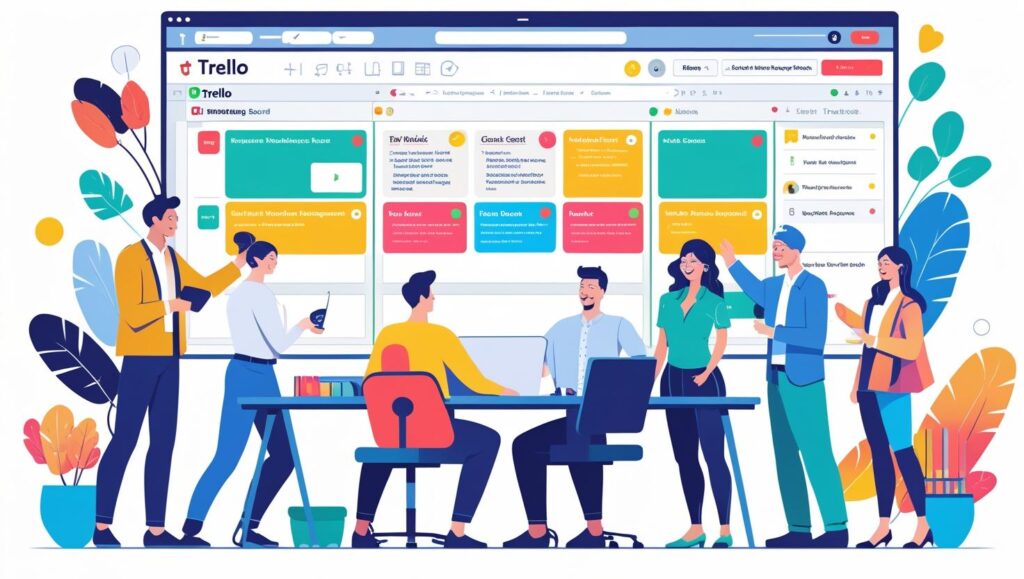The Unseen Challenge of Unparalleled Freedom
Freelancing, a dream for many, offers an alluring promise of unparalleled freedom: setting your own hours, choosing your projects, and being your own boss. Yet, beneath this enticing surface lies an unseen challenge – one that can quickly derail even the most talented new freelancer if not properly managed.
Without the traditional office structure, the daily commute, the watchful eye of a manager, or the constant hum of colleagues, productivity and self-motivation don’t just become important; they become your entire responsibility.
Over the next few minutes of your read today, our article will draw on the latest research, expert strategies, and real-world tools to equip you, the new freelancer, with the knowledge and confidence to navigate the unique demands of working alone, staying productive, and conquering the insidious beast of procrastination

The Solo Voyage: Understanding the Freelance Productivity Paradox
The romanticized image of freelancing often overlooks a critical reality: the inherent isolation. Unlike traditional employment, where built-in routines, team interactions, and external deadlines often provide a natural rhythm, freelancing can plunge you into a world of quiet solitude.
While this can be a blessing for deep work, it also presents a significant challenge.
“Loneliness and isolation can be major issues for remote workers, including freelancers,” notes a study published in the Journal of Occupational Health Psychology. “These feelings can lead to decreased job satisfaction and even burnout.”

Manage
Your
Time
“Either you run the day or the day runs you“.
– Jim Rohn
Without colleagues to bounce ideas off, without impromptu coffee breaks, or without a manager assigning the next urgent task, it’s remarkably easy to fall into a cycle of procrastination, lose focus, or even overwork due to blurred boundaries. This environment demands a proactive and deliberate approach to time management, not just as a tool for efficiency, but as a cornerstone of your mental well-being and long-term success. Understanding these challenges upfront is the first step toward conquering them.
Evidence-Based Strategies: Your Blueprint for Freelance Productivity
Mastering time management as a freelancer isn’t about rigid adherence to a single method; it’s about building a personalized system that supports your unique work style. Here are proven strategies, backed by expert advice and real-world application, to help you thrive without a boss.
1. Prioritization: The North Star of Your Workday
In the world of freelancing, every task can seem important, but not every task moves your business forward. Effective prioritization is the art of discerning what truly matters and then acting on it.
Batching Similar Activities: Minimize context switching by grouping similar tasks together. For example, dedicate a specific block of time to responding to emails, another to client calls, and another to deep creative work. This helps your brain stay in a single “mode” and reduces mental fatigue.
Focus on High-Impact Tasks: Begin each day by identifying your top three “needle-moving” tasks. These are the activities that will generate revenue, secure new clients, or significantly advance a key project. Avoid getting bogged down in low-impact administrative tasks until these crucial items are addressed.
Expert Insight: “The key to productivity is to do less, but do it better,” advises entrepreneur and author Greg McKeown in his book Essentialism. “It’s about making the wisest possible investment of your time and energy to allow for our highest possible contribution.” ([Source: Excerpt from “Essentialism: The Disciplined Pursuit of Less” by Greg McKeown – Widely available in book stores and online.
The Eisenhower Matrix: A powerful framework for distinguishing between urgent and important tasks.
Urgent & Important (Do First): Crises, deadlines, pressing problems.
Important, Not Urgent (Schedule): Long-term planning, relationship building, new skill development. This quadrant is where true growth happens.
Urgent, Not Important (Delegate/Automate): Interruptions, some emails, minor requests. For freelancers, this often means streamlining or saying “no.”
Not Urgent, Not Important (Eliminate): Distractions, time-wasters.

Tip: Regularly review your tasks using this matrix. It provides a clear visual guide for where to focus your energy.
2. Set Clear, Achievable Goals: Your Daily Milestones
Vague goals lead to vague results. For new freelancers, defining specific, measurable, achievable, relevant, and time-bound (SMART) goals for each day and week is non-negotiable.
The Power of Specificity: Instead of “work on marketing,” define it as “draft social media posts for the week’s blog article.” This clarity prevents overwhelm and provides a clear target.
Break It Down: Large projects can feel daunting. The solution? Break them into smaller, actionable steps. For example, “write a report” becomes:
“Research topic and gather resources (2 hours).”
“Outline report structure (1 hour).”
“Write introduction and first section (3 hours).”
“Edit and proofread (1 hour).”
Benefit: Each small completion provides a sense of accomplishment, building momentum and reducing the likelihood of procrastination.
The Daily To-Do List (Your Sacred Scroll): A handwritten or digital to-do list is your daily compass. Update it regularly, prioritizing tasks based on your larger goals. Cross off completed items – that simple act releases dopamine and reinforces productive habits.
3. Establish a Routine and Stick to It: Your Freelance Rhythm
While freedom is a perk, a complete lack of structure can be a detriment. Think of a routine not as a cage, but as a supportive framework that holds your work life together.
Consistent Start and End Times: Treat your freelance work like a “regular job” by setting consistent start and end times, even if you adjust them day-to-day based on energy levels. This signals to your brain that it’s “work time” and helps create a clear boundary between work and personal life, crucial for preventing burnout.
Research Note: A study by the University of Melbourne found that “establishing clear boundaries between work and non-work domains can mitigate the negative effects of work-life interference.”
Integrate Breaks: Your routine should include dedicated work blocks and scheduled breaks. Research consistently shows that short, regular breaks improve focus and prevent mental fatigue. The brain needs time to process information and recharge.
Tip: Use a timer for breaks. Step away from your screen, stretch, grab a drink, or walk around the block.
Schedule Administrative Tasks: Don’t let administrative tasks (emails, invoicing, social media updates) eat into your core work time. Dedicate specific slots in your routine for these necessary but often less impactful activities.
Until we can manage time, we can manage nothing else
Peter Drucker



4. Leverage Proven Time Management Techniques: Tools for Focus
The freelance world is rife with distractions. Fortunately, various techniques can help you carve out focused work periods.
- The Pomodoro Technique: One of the most popular and effective methods. It involves 25 minutes of focused work, followed by a 5-minute break. After four “Pomodoros,” take a longer break (15-30 minutes).
- Why it works: It leverages short bursts of intense focus, making daunting tasks seem more manageable, and the regular breaks prevent burnout.
- Tool Tip: Apps like PomoFocus or Tomato Timer are simple, free tools to implement this.
- Monotasking: The antithesis of multitasking. Focus on one task at a time until it’s complete or you reach a natural breaking point. Our brains are not designed for true multitasking; rather, they rapidly switch between tasks, leading to decreased efficiency and increased errors.
- Research: A study by Stanford University found that “people who are regularly bombarded with several streams of electronic information do not pay attention, control their memory, or switch from one job to another as well as those who prefer to complete one task at a time.” (Source: Stanford University – Research on Multitasking – Search for “Stanford multitasking research” for various articles, e.g., published in PNAS or other reputable journals.)
- Deep Work Sessions: Coined by Cal Newport, author of Deep Work, this concept involves long, uninterrupted blocks of work on cognitively demanding tasks, free from distractions.
- How to achieve it: Turn off notifications, close unnecessary tabs, inform others you’re unavailable, and create an environment conducive to intense focus.
5. Eliminate Distractions and Foster Self-Motivation: Cultivating Your Inner Boss
Without an external boss, your inner drive is paramount. Cultivating an environment that minimizes distractions and maximizes motivation is key.
The “Do I Like This?” Test: As the intern’s brief wisely suggests, ask yourself: “Do I like this? Am I learning something new? Do I have control over this?” If the answers are mostly “yes,” you’re likely on a path to sustained motivation.
Identify Your Distraction Triggers: Is it social media notifications? A messy workspace? The lure of the fridge? Pinpoint your main culprits.
Craft Your Workspace: Your physical environment profoundly impacts your productivity.
Dedicated Space: If possible, have a designated workspace, even if it’s just a specific corner of a room. This mental demarcation helps you switch into “work mode.”
Minimize Clutter: A clean, organized workspace reduces visual distractions and helps maintain mental clarity.
Noise Control: Invest in noise-cancelling headphones if you work in a noisy environment. Consider ambient sounds or instrumental music if silence is too distracting.
Fuelling Your Inner Drive: Self-motivation isn’t a mystical quality; it’s a practice.
Connect to Your Purpose: Remind yourself why you’re freelancing. Is it for financial freedom, creative expression, or a better work-life balance? Keeping your ultimate goals in mind provides powerful motivation.
Seek Challenging Projects: Growth happens when you step outside your comfort zone. Taking on projects that stretch your skills keeps you engaged and prevents boredom.
Continuous Learning: The freelance landscape is constantly evolving. Invest time in learning new skills or refining existing ones. This not only keeps you competitive but also invigorates your intellectual curiosity.
Try using our Simple To Do List & Eisenhower Tool:
Eisenhower Matrix Task Manager
Transform your to-do list into an actionable priority matrix
Step 1: Add Your Tasks
📁 Drag and drop a text file here or click to upload
Or paste your tasks directly:
Step 2: Prioritize Your Tasks
Select the priority level for each task based on the Eisenhower Matrix:
Essential Tools to Supercharge Your Freelance Productivity
While strategies are the foundation, the right tools can act as powerful accelerators, helping you implement your time management plan with greater ease and efficiency.
- Time Tracking: Essential for accurate billing, understanding your workflow, and identifying time sinks.
- Clockify: A popular, free time tracker that allows you to monitor time spent on different projects and tasks. It's great for client billing and personal productivity analysis.
- Toggl Track: Another excellent option, user-friendly and offering detailed reports.
- Scheduling & Calendar Management: Your digital planner for life and work.
- Google Calendar / Outlook Calendar: Block out specific time slots for work, meetings, breaks, and personal appointments. Treat these blocks as non-negotiable commitments. Set reminders for important deadlines.
- Focus & Pomodoro Apps: To keep you on task.
- PomoFocus / Forest: Apps that implement the Pomodoro Technique, often with added features like distraction blocking or gamification to encourage focus. Forest, for example, grows a tree when you stay focused, and it dies if you leave the app.
- Project Management & Communication: For solo projects or client collaboration.
- Trello / Asana / ClickUp: Visual project management tools that help you organize tasks, track progress, and collaborate with clients or subcontractors. They're excellent for breaking down large projects into manageable steps.
- Slack / Google Workspace: For streamlined communication with clients and collaborators, reducing endless email chains. Google Workspace (formerly G Suite) also offers document creation, spreadsheets, and cloud storage, essential for most freelancers.
- Note-Taking & Idea Capture: For when inspiration strikes.
- Evernote / Notion / Google Keep: Cloud-based tools for capturing ideas, creating to-do lists, storing research, and organizing information. Crucial for keeping your mental workspace clear.
Overcoming the "Working Alone" Challenge: Building Your Freelance Village
The isolation of freelancing is a genuine concern, but it doesn't have to define your experience. Proactively building connections is vital for both your mental health and your professional growth.
- Join Local Freelancer Groups: Search for local meetups, co-working spaces, or professional organizations in your area. Websites like Meetup.com are great for finding these. These groups offer networking opportunities, a chance to share experiences, and a sense of camaraderie.
- Participate in Online Forums and Communities: The internet offers a vast array of supportive communities.
- LinkedIn Groups: Search for groups related to your niche or general freelancing. Engage in discussions, ask questions, and share your expertise.
- Reddit: Subreddits like r/freelance, r/smallbusiness, or those specific to your industry can be incredibly insightful and supportive.
- Niche Freelancer Sites: Many platforms dedicated to specific freelance professions (e.g., Upwork, Fiverr, Contently) have active forums or community sections.
- Quora: Answer questions related to your expertise, showcasing your knowledge and connecting with potential clients or peers.
- Schedule Regular Social Interactions: Don't let your social life dwindle. Make a conscious effort to schedule coffee chats, virtual meetups, or even just regular phone calls with friends, family, or other freelancers. These interactions provide crucial mental breaks and a sense of connection.
- Consider Co-working Spaces: If your budget allows, a co-working space can provide the best of both worlds: the freedom of freelancing with the social interaction and professional environment of an office. Many offer flexible day passes or part-time memberships.

Conquering the Procrastination Monster: Practical Tactics
Procrastination is a universal struggle, but it often looms larger for freelancers without external accountability. Understanding its roots and implementing targeted strategies can help you tame it.
- The "Why" Behind the Delay: Procrastination often stems from fear (of failure, of success, of the unknown), overwhelm, or simply a lack of clarity. Acknowledge these feelings rather than immediately judging yourself.
- Set Deadlines for Every Task: Even minor tasks benefit from a clear deadline. If a client hasn't given you one, create one for yourself. Share it with an accountability partner if that helps.
- Parkinson's Law: "Work expands so as to fill the time available for its completion." By giving yourself less time, you force efficiency.
- Modify Your Environment (Again!): This bears repeating because it's so powerful.
- Remove Digital Distractions: Turn off social media notifications, use website blockers (e.g., Cold Turkey, Freedom) for distracting sites during work hours.
- Physical Setup: As mentioned earlier, a clean, organized, and dedicated workspace significantly reduces the mental friction that leads to procrastination.
- The "Two-Minute Rule": If a task takes less than two minutes to complete, do it immediately. This prevents small tasks from piling up and becoming overwhelming. Answering a quick email, filing a document, or making a short call can be done right away.
- Reward System: Positive reinforcement works. Promise yourself a small, enjoyable reward (a short walk, a favourite podcast, a few minutes of social media Browse) upon completing a challenging task or a set number of Pomodoros.
- Develop Productive Habits in Leisure: This might sound counterintuitive, but cultivating a mindset of purposeful action even in your free time can reinforce good habits during work hours. This isn't about being productive 24/7, but about being intentional with your choices. For example, if you decide to relax, fully relax. If you decide to pursue a hobby, commit to it. This intentionality spills over into your work.
Conclusion: Your Sustainable, Fulfilling Freelance Future
Effective time management is not merely a collection of tricks; it's the bedrock upon which a sustainable and fulfilling freelance career is built. By embracing strategies that prioritize your most impactful work, setting clear and achievable goals, establishing a rhythm for your days, and leveraging the right tools, you gain control over your time and, by extension, your freelance destiny.
The "working alone" challenge is real, but it can be mitigated by actively seeking out and engaging with a supportive community. Procrastination, the freelancer's omnipresent shadow, can be kept at bay through conscious environmental control and disciplined action.
Remember, you are the CEO, the project manager, the marketing department, and the chief productivity officer of your freelance business. This level of autonomy is incredibly empowering, but it demands an intentional approach to how you manage your most valuable asset: your time. Implement these strategies, adapt them to your unique needs, and you'll not only stay productive but also build a resilient, thriving freelance career that truly offers the freedom you envisioned.
Your First Steps to Freelance Freedom
